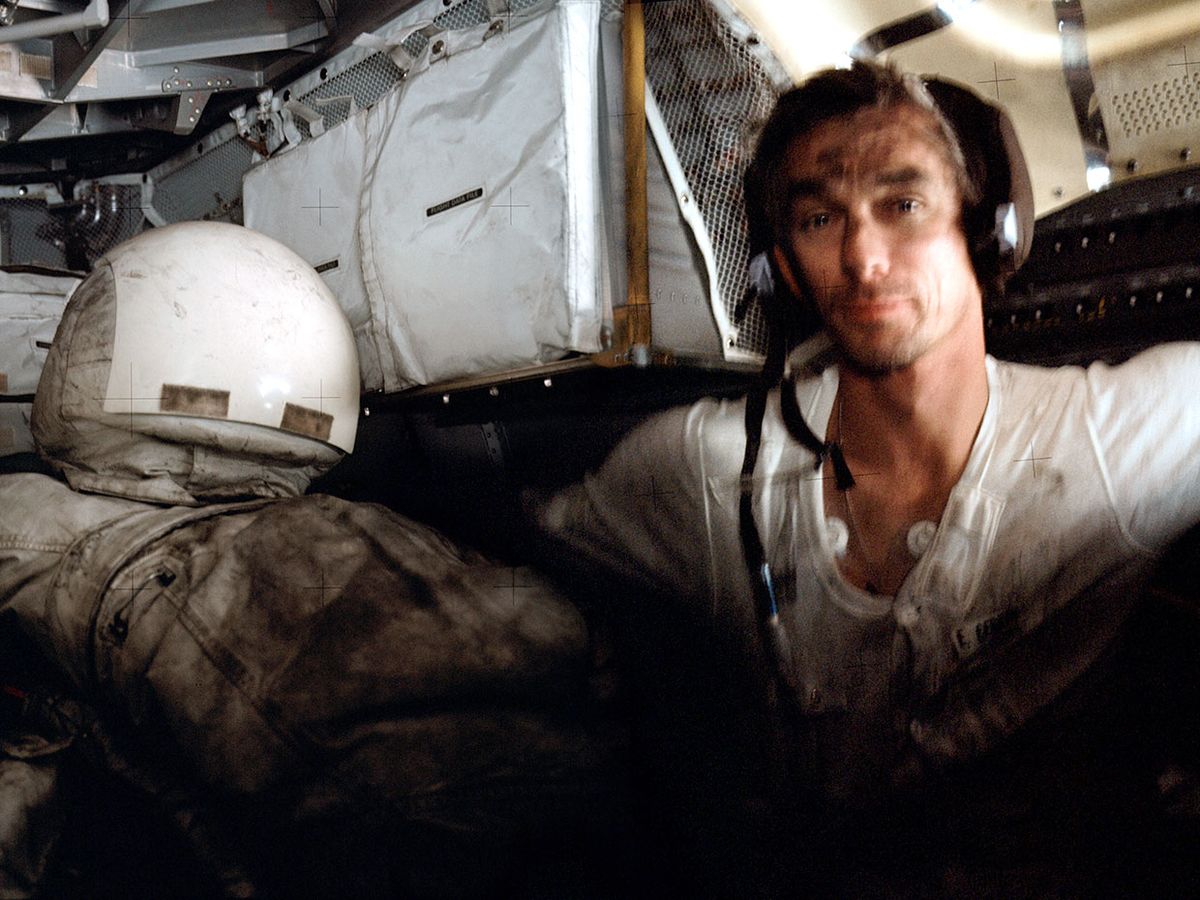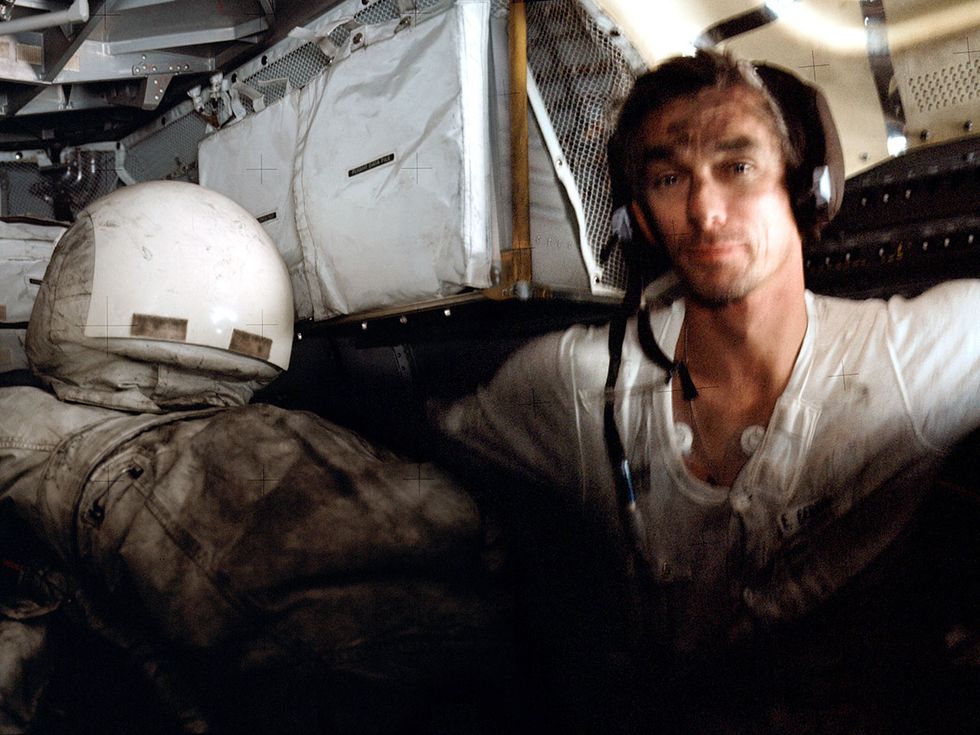
They were called the “dusty dozen” for good reason. The 12 Apollo astronauts who walked on the lunar surface between 1969 and 1972 kicked up so much moondust that the powdery sediment got lodged in every nook and cranny of their space suits. Caked in the stuff, the astronauts inadvertently tracked the toxic dust into their spacecraft and even back down to Earth upon landing.
These NASA astronauts complained of a “lunar hay fever” that irritated their eyes, lungs, and nostrils. A doctor who helped the Apollo 11 crew members emerge from their dust-scattered space module following its ocean splashdown experienced allergic reactions of his own. “Dust is probably one of our greatest inhibitors to a nominal operation on the moon,” Apollo 17 astronaut Gene Cernan, the last man to walk on the moon, said during a postflight debriefing. “I think we can overcome other physiological or physical or mechanical problems, except dust.”
Billowing clouds of dust particles—jagged and abrasive for want of weathering and atmospheric reactions—are hardly the only health hazards posed by a lunar mission, though. Galactic cosmic rays would bombard lunar inhabitants with a steady stream of high-energy radiation. The level of gravity on the moon—about 17 percent that of Earth’s—could wreak havoc on bones, muscles, and other organs. And then there are the psychological aspects of what one NASA astronaut described as the “vast loneliness” of the moon.
As humanity prepares to return to the moon and eventually colonize it, scientists are now actively probing these risks and beginning to devise medical countermeasures. Yet solid evidence on the health consequences of lunar living is extremely limited. “Except for the Apollo experience, we really have no data,” says Laurence Young, a space medicine scientist in MIT’s department of aeronautics and astronautics—and those Apollo missions were never designed with biomedical research goals in mind.
In contrast, the International Space Station (ISS) was established as a giant floating laboratory from the get-go, and nearly two decades of experiments from the continuously inhabited station do offer some clues about what it might be like for people to live on the moon for extended durations. But a zero-gravity space station orbiting within the protective halo of the Earth’s magnetic field is hardly analogous to the moon’s surface, with its partial gravity and harsher radiation.
Researchers therefore have to settle for approximations of lunar conditions. They study proxy dust instead of the real thing, because moondust collected by Apollo astronauts remains scarce. (And even those precious Apollo samples became less reactive after coming into contact with the Earth’s moist, oxygen-rich air.) The researchers simulate galactic radiation by using particle accelerators to create the kinds of energetic heavy ions found in deep space. And they have a variety of tricks to fudge one-sixth gravity: They take parabolic flights that induce short bursts of moonlike conditions; use harnesses and other body-weight support systems to mimic the biomechanics expected in reduced gravity environments; and place subjects in tilted beds for weeks on end to model the effects of lunar gravity on heart function.
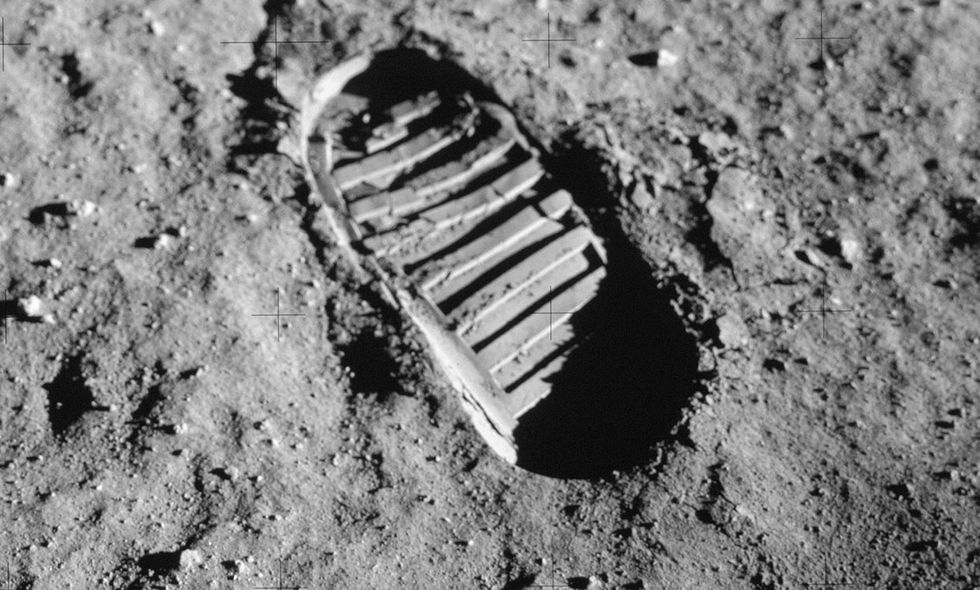
The imitations are never perfect, but they are informative. Last year, an interdisciplinary team from Stony Brook University, in New York, exposed human lung cells and mouse brain cells to dust samples that resemble the regolith found in the lunar highlands and on the moon’s volcanic plains. Compared with less-reactive particulate materials, the toxic dust caused more genetic mutations and cell death, raising the specter of moondust triggering neurodegeneration and cancer in future lunar explorers. “The DNA is being damaged, so there is a risk of those types of things happening,” says Rachel Caston, a molecular biologist who led the research. (She’s now at Indiana University–Purdue University Indianapolis.)
But will the same damage happen inside the human body? And if so, would ensuring the safety of future moon settlers require the equivalent of a mudroom, an expensive and logistically challenging piece of equipment to haul over to our celestial neighbor? And just how clean would that mudroom have to be to keep astronauts safe?
“We just don’t know, and therein lies the current conundrum,” says Kim Prisk, a pulmonary physiologist at the University of California, San Diego. “Is this just a nuisance dust, or something potentially very toxic?”
None of the Apollo astronauts suffered any long-term ill effects from dust exposure, only acute respiratory problems—which suggests the lunar schmutz might not be too nasty. But the longest stay on the moon so far was the Apollo 17 astronauts’ 75-hour mission, the equivalent of a long weekend getaway. Plus, with only 12 human data points to draw from, many uncertainties remain. To be on the safe side, when it comes to lunar dust, “a mitigation strategy must be in place before we establish habitats on the lunar surface,” says Andrea Hanson, an aerospace engineer at NASA who previously managed the Exercise Physiology & Countermeasures Lab at Johnson Space Center.
But Hanson sees a bigger concern than lunar dust: exposure to cosmic rays, the high-energy particles from beyond our solar system that constantly pummel the moon. She worries in particular about what a large shower of these reactive ions might do to an astronaut’s sensitive organs, such as the brain and heart.
To study that kind of scenario, in 2003 NASA built a Space Radiation Laboratory at the Brookhaven National Laboratory in New York state. It’s the first and only facility in the United States capable of producing heavy ions of the kind found in outer space. There, researchers blast mice with cosmiclike rays to show, for example, how space radiation can seriously harm the gastrointestinal tract or how a potential prophylactic drug treatment could protect the brain from radiation-induced cognitive decline.
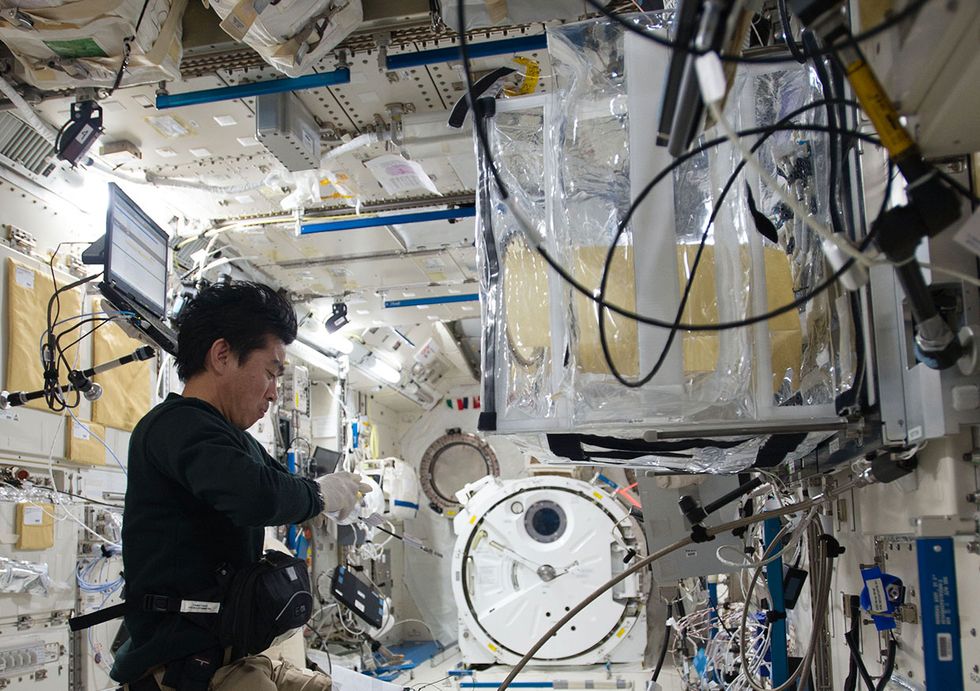
Mouse experiments also underpinMary Bouxsein’s investigations into the effects of partial gravity on musculoskeletal health. Her research will take place aboard the ISS in a spinning cage contraption built by the Japan Aerospace Exploration Agency. This counterbalanced centrifuge will allow Bouxsein, a biomechanical engineer at the Beth Israel Deaconess Medical Center, in Boston, to monitor mice living at a variety of gravity levels for weeks at a time in order to determine whether lunarlike gravity is enough to preserve proper bone and muscle function. “It’s impossible on Earth to do a true artificial gravity experiment,” Bouxsein says, whereas on the ISS “we can actually, truly look at the protective effects of artificial gravity.”
Ben Levine, director of the Institute for Exercise and Environmental Medicine, a joint program of the Texas Health Presbyterian Hospital Dallas and the University of Texas Southwestern Medical Center, predicts that the moon’s one-sixth gravity will not put enough weight on our bodies to protect against loss of bone mass, muscle strength, and heart pumping capacity. But fortunately, he points out, effective exercise regimes already exist that can be adapted for life on the moon. “If you do what they do on the space station now,” Levine says, “you should be able to completely prevent ongoing atrophy.”
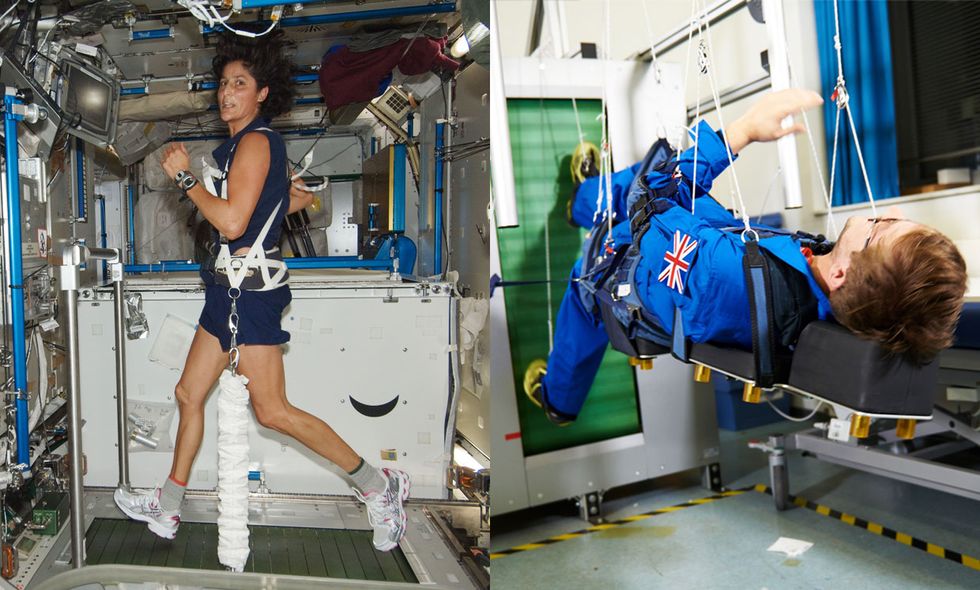
The daily cardio and strength training now common for ISS astronauts might be difficult to achieve in future moon explorations, though—their 2.5-hour workouts include weightlifting, running, and biking on machines that use bungee cords to pull at them. That’s why Tobias Weber and his colleagues at the European Space Agency’s European Astronaut Centre in Cologne, Germany, have been studying streamlined alternatives. As part of the Movement in Low Gravity Study, ESA’s Space Medicine Team recently used a specially designed treadmill that allows people to run, walk, and hop while suspended horizontally by a series of cables.
Adjusting the force by which pulleys bring users laterally back toward the treadmill allows the system to provide various levels of gravity. With this “verticalized” treadmill setup, the researchers showed that just a few minutes of daily hopping, in a simple up-and-down movement akin to skipping rope, could exert enough force on the bones, muscles, and tendons in lunar gravity to combat the physiological degradation expected to occur on the moon.
“Jumping may be a really potent multisystem countermeasure,” says aerospace physiologist David Green, a member of the ESA team. As an added bonus, the short bouts of hopping may be more efficient—and less boring—than running on a treadmill, he adds. “At least at the start,” Green says, “it is hard not to smile when you’re hopping.”
Ultimately, it’s likely that lunar missions will proceed just as they did in the Apollo era: with many health questions unanswered and few protective medical procedures fully worked out. That situation may sound frightening to some would-be moon-trotters, but the uncertainties don’t faze Bill Paloski, director of NASA’s Human Research Program.
“I’m actually not terribly concerned about health and physiology issues,” he says. “We’ll be able to monitor closely enough the overall health and performance of crew members and then provide near-real-time support from Earth for most things.” In the worst-case scenario, astronauts could fly home in a matter of days—a rescue plan that won’t be possible as the mission moves on to Mars and beyond.
That’s what makes the moon such an “interesting stepping stone,” Paloski says. “It’s a way of testing a lot of the concepts we have for how to do things on the Mars surface.”
About the Author
Elie Dolgin is a science writer specializing in biomedical research and drug discovery. After a Ph.D. spent studying the population genetics of nematodes, he swapped worms for words—entering journalism as an editor at The Scientist, Nature Medicine, and STAT. Now a freelancer, Dolgin is a frequent contributor to New Scientist, Nature, IEEE Spectrum, and more.
Elie Dolgin is a science writer specializing in biomedical research and drug discovery. After a PhD spent studying the population genetics of nematodes, he swapped worms for words—entering journalism as an editor at The Scientist, Nature Medicine, and STAT. Now a freelancer, Elie is a frequent contributor to New Scientist, Nature, IEEE Spectrum, and more.
